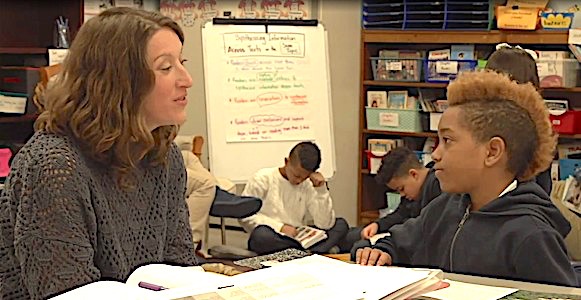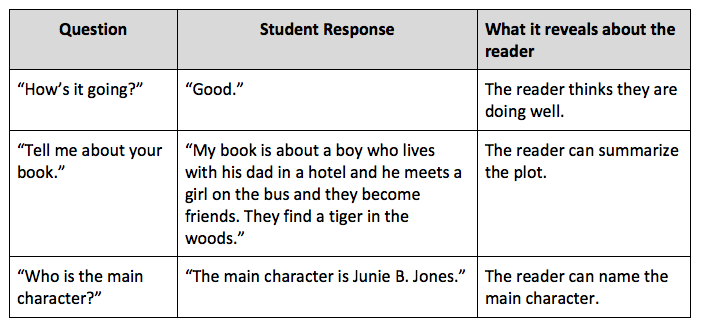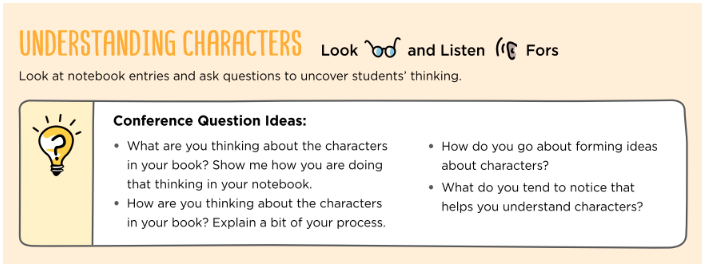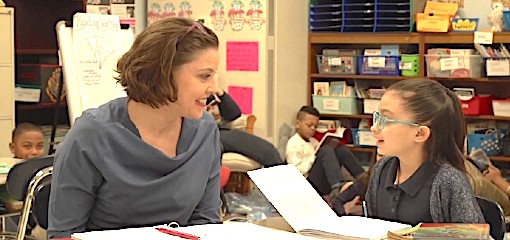Conferring Moves That Help Readers Open Up
By Gravity Goldberg and Renée Houser

Gravity
GRAVITY: I sat down next to Miles and asked him, “Tell me about your book.” Then I listened, as he went on and on retelling all of the events of his book for several minutes. I didn’t want to be rude and interrupt, but all I was learning from Miles was that he could literally recall the events of the book.
After hundreds of conferences like this, I realized the question I was asking students was not that helpful. It was disingenuous, in fact, because I was not really interested in a plot summary of the book. I was really interested in the reader who was holding it.

Renée
After fifteen years of studying reading conferences, we’ve realized that the real goal of a conference is to better understand the reader and their process. When teachers keep this goal in mind, we can examine the questions we tend to ask readers and decide whether they are helping us uncover each reader’s identity and thinking.
As we reflect on our current conferring questions, we also need to collaborate with colleagues on possible new questions that align with goals for students, and to allow our genuine curiosity to be our guide.
Reflect on Current Conferring Questions
One way to reflect upon our conferring questions is to listen after we ask them and jot down what we learn about the reader. Then we can ask ourselves, “What kind of information is this revealing about the reader?”
After reading through the student responses, you can ask yourself, “Am I getting the sort of information about student readers that I am looking for?” For example, in all of the questions in the previous chart we gained limited information about the reader’s identity – their preferences, goals, or mindset. We also learned very little about the readers process – what they were thinking about and responding to, or how they approached the text. We really don’t know what they were thinking about as they read.
Collaborate with Colleagues to Generate New Conferring Questions
If you find that you are looking for additional information or that your questions are not actually helping you get to know the reader, you can create lists of new questions to ask. We suggest you sit with colleagues and generate lists that align with your curriculum and unit goals. The following is an example of a tool we use when purposefully shifting the types of questions we ask. We tend to carry these little lists with us and look at them before we begin the conference.
This set of questions is focused on helping us better understand a reader’s goals.
This set of questions is focused on helping us understand a reader’s thinking about characters.
We don’t tend to ask about several aspects of reading in one conference and instead focus on one area or goal at a time. We also don’t ask all of these questions in a single conference. They are possibilities and not a script. We’ve found that they invite students to open up and share more of their identity and process with us because the questions are about the reader’s thinking.
Allow Genuine Curiosity to Guide Your Conversations
Even with a list of possible questions and an instructional focus in mind, we also find that our genuine curiosity about students actually creates the best conversations. When Gravity can’t wait to hear more and asks, “Can you tell me more about that?” the student can feel her interest and almost always is willing to dig deeper and explain more. Or when Renée asks questions such as “What is working well for you right now as a reader?” the act of asking the question can also pique the reader’s own curiosity about themselves.
Sometimes a reader needs us to bring our curiosity so they can begin to explore their own identity and process further. When in doubt about whether you should ask a question, think, “Am I genuinely interested in the student’s response?” If so, it will likely yield a great conversation by creating a safe space for the reader to share.

Gravity Goldberg (@drgavityg) is an international consultant and author of five books on teaching. She holds a B.A. and M.Ed. from Boston College and a doctorate from Teachers College, Columbia University. She serves as a coach for Seth Godin’s altMBA and is the founding director of Gravity Goldberg, LLC, a team that provides side-by-side coaching for teachers.
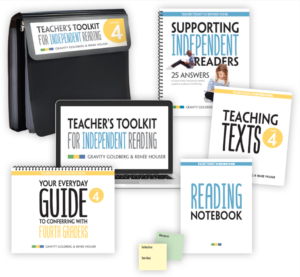
Gravity and Renée are co-authors of the resource set Teacher’s Toolkit for Independent Reading (Grades 3-5) from Stenhouse Publishers (2020) on which this article is based.

